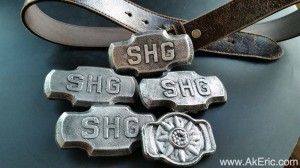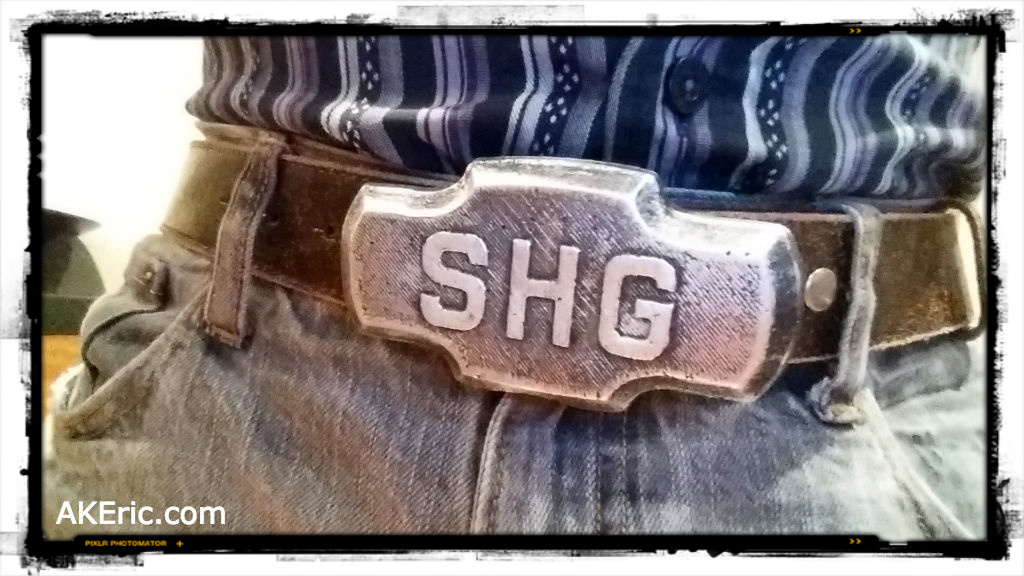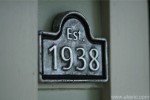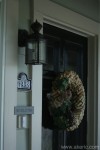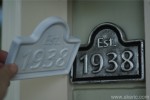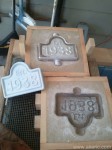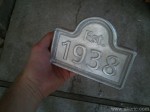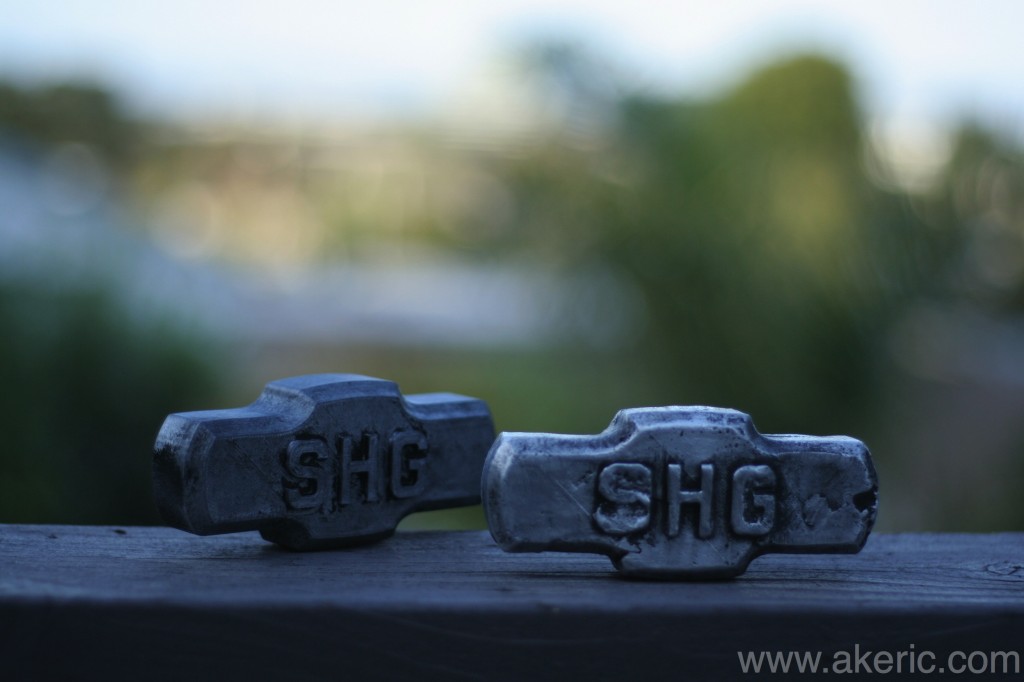Four more buckles cast
Had a great afternoon: Invited a bunch of friends over, we BBQ’d and I showed them how aluminum sand-casting works: I designed (in Autodesk Fusion 360) and 3d printed (on my Makerbot Replicator 1) a new “sunflower” buckle for my wife, plus printed a few more forms so I could cast additional SHG buckles for a raffle at work (see my previous post on the matter).
Was my first try printing multiple patterns in the same flask, and using multiple (2) flasks at the same time. But it all worked out great. I don’t think I’ll make my millions casting buckles, but it sure is rewarding.
Other experiments included how fast you can cook a hotdog in the furnace, and what happens to a hotdog when you dip it in molten aluminum. Both very bad for the hotdog…
